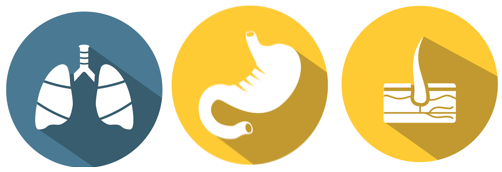Key points
- Lead dust and fumes are not noticeable in the air and do not have an odor.
- Your body absorbs higher levels of lead when you breathe it in.
- Certain work tasks, like heating or grinding metal, can increase lead exposure risk.

How lead gets inside your body
Lead exposure is the highest when it is breathed-in
Breathing lead dust and fumes
You cannot see or smell lead dust or fumes. They do not have an odor and may not be seen in the air. You may not know you are being exposed.
Swallowing lead dust and fumes
Lead can leave a metallic taste in your mouth, though some people may not notice this. Lead dust can settle on food, water, clothes, and other objects.
Absorbing lead through the skin
Some studies have found that lead can be absorbed through skin.1 Lead dust on your skin, clothes, shoes, or hair can be hard to notice.
Industries with increased risk
Lead is used in many industries, but is most common in
- Construction
- Mining
- Manufacturing
View the latest trends in workplace lead exposure!
Behaviors that can increase risk
Work tasks that may expose you to lead fumes
Heating or soldering metal during metal processing can produce lead fumes.
Work tasks that may expose you to lead dust
- Cutting or grinding metal can produce lead dust.
- Sanding or removing lead paint with a heat gun can produce lead dust.
- Firing handguns or rifles can produce lead dust.
Other ways you can increase your risk in the workplace
- Eating, drinking, or smoking in areas where lead is being processed or stored.
- Not washing your hands before you eat.
- Handling items contaminated with lead and then touch your eyes, nose, or mouth.
- U.S. Department of Health and Human Services [2007] Toxicological profile for Lead (update) [http://www.atsdr.cdc.gov/toxprofiles/tp13.pdfpdf icon (PDF 4.8 MB, 582 pages)] Public Health Service Agency for Toxic Substances and Disease
